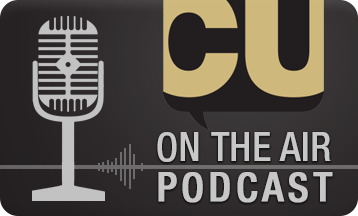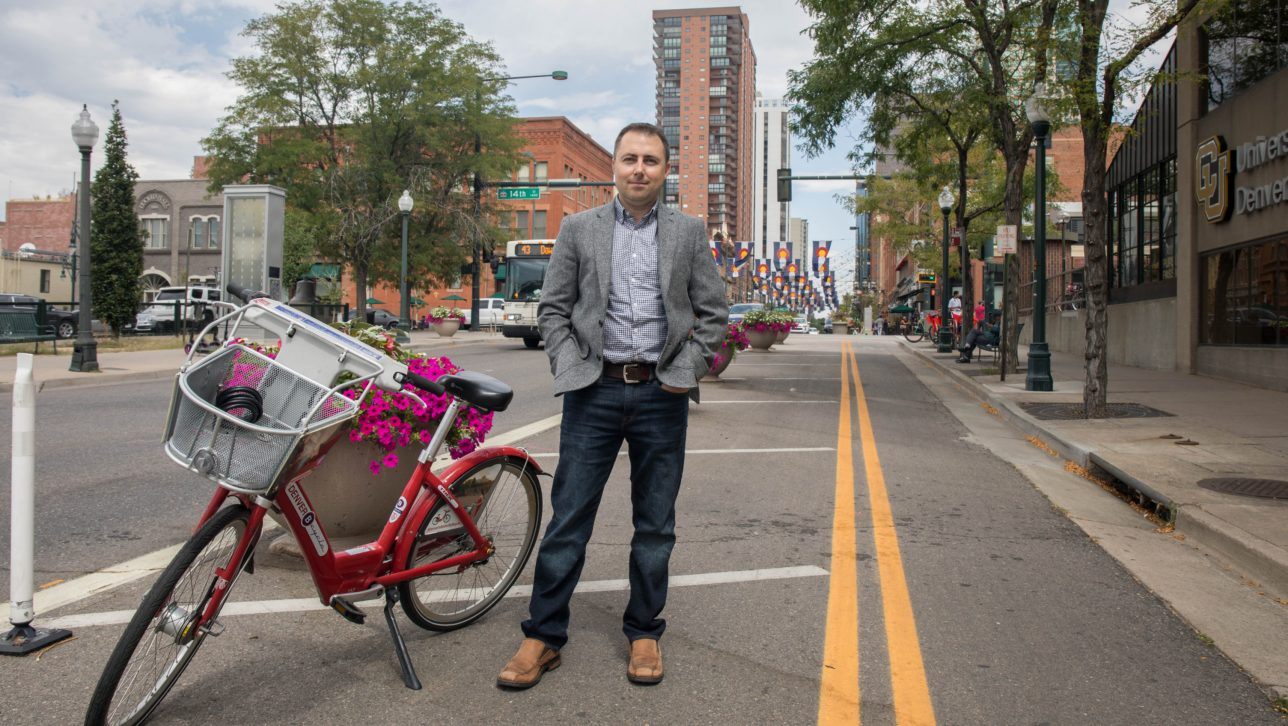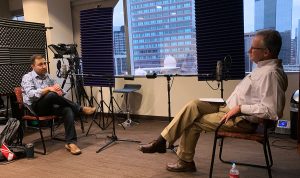Podcast: Play in new window | Download
Subscribe: Spotify | Email | RSS | More
Today on CU on the Air we talk with Wes Marshall, professor of civil engineering with a joint appointment in urban planning in the College of Engineering, Design and Computing at CU Denver. Host Ken McConnellogue discusses with Professor Marshall what constitutes safe streets and neighborhoods for pedestrians, wheel chairs, bicyclists, autos and even scooters; and why the old ways in some ways are way better.
- The nexus of transportation engineering and urban planning = plangineer.
- Dual degrees now offered at CU Denver in those areas.
- How living in Boston shaped Professor Marshall’s vision for planning and engineering.
- The inability to get from Point A to B without a car – even if it’s close by.
- Beautiful neighborhoods in Denver? Look to Wash Park.
- In the past 10 years as Denver has grown, there’s a lot more walkability.
- More options for transportation: cycling, scooters, walking.
- The good and bad of the scooters in Denver. Where are people supposed to ride them?
- Wheelchairs in the bike lane: The sidewalks aren’t safe for some.
- Denver puts onus of sidewalk maintenance on property owners, which is inefficient.
- Surprise! The safest cities are those who have the most cyclists.
- Scofflaw cyclists most times are rolling through stop signs for safety reasons.
- Facilitating options: The more options you have, the better the sustainability.
- Why cul-de-sacs aren’t any safer than streets.
- Problems with Central Park, formerly Stapleton.
- Human nature shows if people can speed they will. Thus, curves are safer.
- Sabbatical in Australia finds in 1970, same fatality rate as USA. Now, four times less.
- Self-enforcing roads: Building roads that make it difficult to speed.
- Cameras reduce need for police interaction.
- Quick fixes include road restrictions, or obstacles, to slow things down.
- Who is doing it well? Davis, California, for one.
- Building communities where children, others don’t have to be driven.
- How technology for the physically challenged can benefit the larger population.
- The evolution of bus lanes and why taking that lane away benefits traffic flow.
- Why lower-income neighborhoods pose higher risks for residents.
- Sustainable transportation course: Here’s the issue, how can we do it better?
- What’s coming up? Fundamentals will – and should – stay the same.
- Take away the trees? People start driving faster and fatalities increase.
Resources
- College of Engineering, Design and Computing
- Researcher Wes Marshall and the future of road safety, CU Denver News
- Hidden Safety Problems Keep Denver Kids from Walking and Biking, StreetsBlog
- Cycling lanes reduce fatalities for all road users, study shows, Science Daily
- Traffic Sucks, But Commuter Congestion Probably Doesn’t Affect the Economy, Colorado Public Radio
- Elements of Access: Transport Planning for Engineers * Transport Engineering for Planners, Wes Marshall, David Levinson and Kay Axhausen
- Why Do Cyclists Break the Rules? NPR Science Friday
- Why Older Cities May Be Healthier For You, Inside Science
- Pedal Power! Cycling Safety In Numbers, Inside Science
- Traffic Doesn’t Hurt the Economy—But We Should Still Fix It, Wired
- Bicyclists learn from bicyclists to break traffic laws. But perhaps the law should learn from them, researcher says, Washington Post
Why sprawl may be bad for your health, Washington Post


